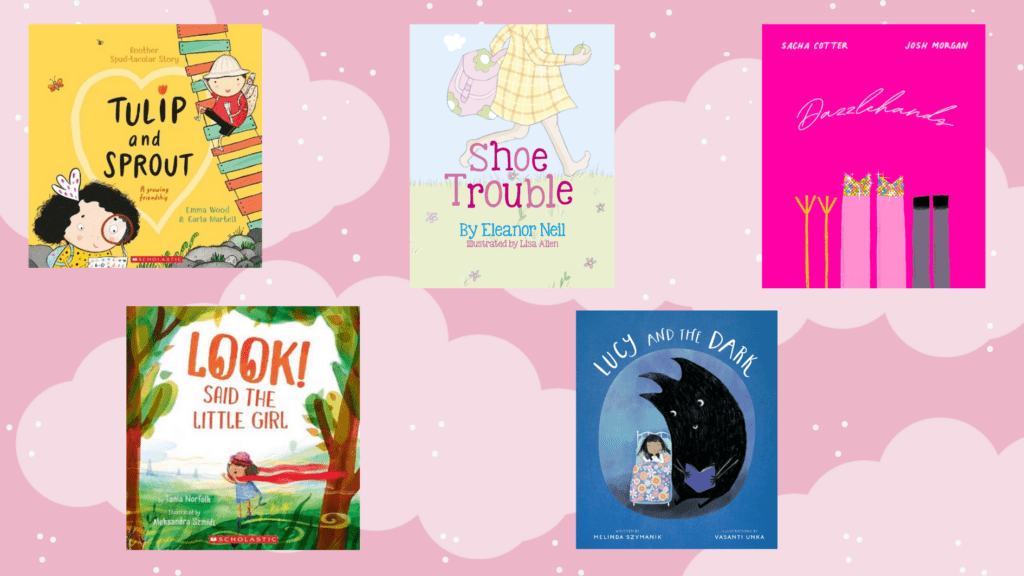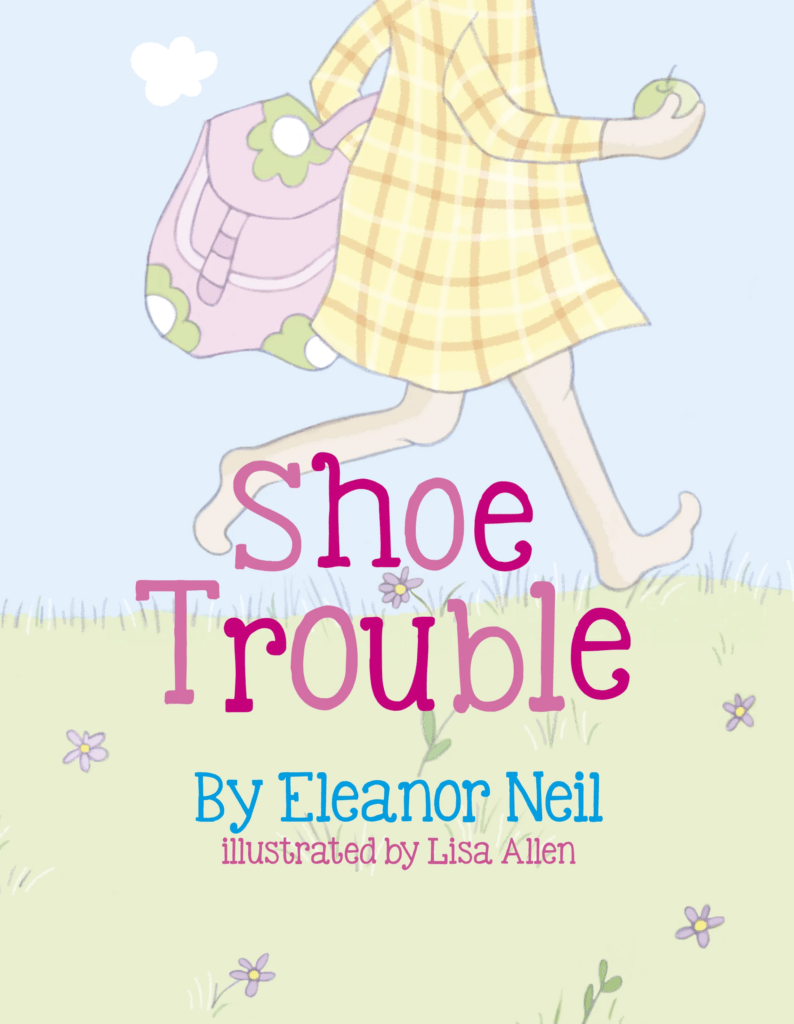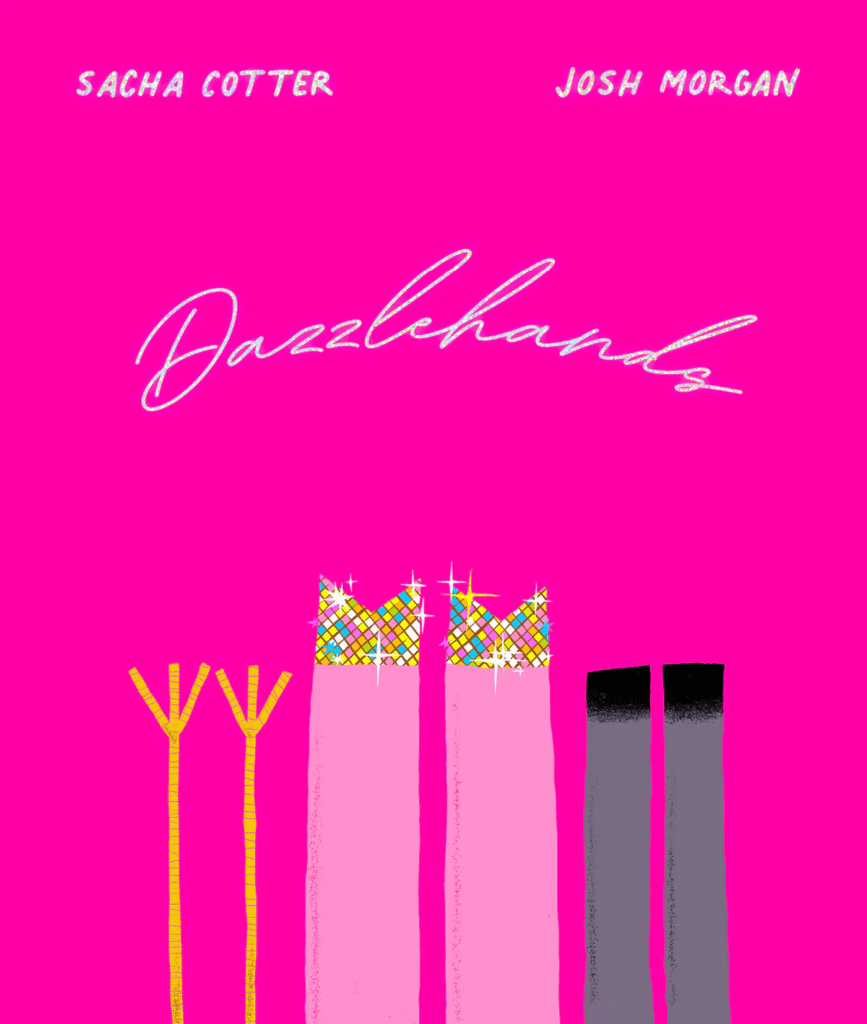Annelies Judson brings us another batch of reviews of some of the latest picture books to hit the shelves.

Lucy and the Dark, written by Melinda Szymanik and illustrated by Vasanti Unka
I’m front-footing this review because it deserves to be the first one. Firstly—like almost all of the books featured on The Sapling—it’s from Aotearoa New Zealand, and it’s important to support our small but excellent children’s book publishing industry. Secondly, it’s brought to us by the superb writer Melinda Szymanik, and equally talented illustrator Vasanti Unka. In 2021 this pairing brought us My Elephant Is Blue, which was a delight, and this book is no different. Thirdly, the production values are excellent. (It has a glow-in-the-dark cover! If there was ever a sign of the times as far as the increasing valuing of children’s books, then this is it.) And lastly, the story is great. Which is, of course, the most crucial part.
This is a book with appeal across the board. I’m sure all kids (and probably some adults) can relate to a fear of the dark
Like My Elephant Is Blue, this is a universal book. There is no sense of Kiwiana about it at all, which is not a bad thing. It’s important to see books “by us, for us”, but it’s also important that NZ writers get the opportunity to write stories that cross oceans. The story is the classic childhood problem about being afraid of the dark. But the dark is personified as Dark, and it turns out that Dark is upset that everyone is afraid of it. The two become friends and go off on an adventure, in which it becomes apparent that not only can the dark be exciting (it’s in tunnels! Caves! Space!), but it’s also quite important for helping people get some sleep. I love Unka’s colour choices, the comedic facials of the people and animals, and the ever-so-cute depiction of Dark as a large, but not at all scary, black monster.
This is a book with appeal across the board. I’m sure all kids (and probably some adults) can relate to a fear of the dark, but even without that, it’s a well-told story with fantastic illustrations, and that’s the kind of thing that should appeal to anyone.

Lucy and the Dark
Written by Melinda Szymanik
Illustrated by Vasanti Unka
Published by Penguin Random House
RRP: $21.00
Tulip and Sprout, written by Emma Wood and illustrated by Carla Martell
A follow-up to the successful Tulip and Doug, this is another delightful picture book about a girl called Tulip, whose friends include Max (a human), Susan (a rock) and Doug (a potato). The story is beautifully linked to the original (in which Doug gets lost in the garden) by having Tulip discover a new plant in the garden that turns out to be…Doug! Or what was Doug, anyway. However, the book doesn’t rely on needing to have read the original, so new readers of the series can pick up the stories in any order.
The story is beautifully linked to the original…However, the book doesn’t rely on needing to have read the original, so new readers of the series can pick up the stories in any order
I love a picture book that works on both the level of the adult reading it and the child listening, and Tulip and Sprout does not disappoint. The idea of children having a pet rock and a potato as friends isn’t wildly far-fetched, but is also funny enough that children are in on the laugh (especially when Tulip’s dad introduces the children to his friend, who is a carrot). The language choices, such as the children having an “important mission” and going to “the jungle” (the garden) are perfectly believable as a child’s imaginary play world, and there is a nice interplay between the words and pictures when a housecat (represented visually) is described as “a wild predator”. But for the adult reader, there are some lovely puns, starting with the book’s subtitle (“A growing friendship”) and Max exclaiming of a rock garden: “This garden rocks!”
In short: Appealing to the kindy and early school ages, this is a great book that both adults and children can enjoy. I’m hoping we get another addition to the series in the future.

Tulip and Sprout
Written by Emma Wood
Illustrated by Carla Martell
Published by Scholastic
RRP: $21.99
Shoe Trouble, written by Eleanor Neil and illustrated by Lisa Allen
This is a story that really speaks to the cultural experience of being a Kiwi kid—a story about leaving your shoes at school. Each day, Eleanor forgets to bring her shoes home from school, so each day she gets sent with a new pair (including, humorously, a pair of slippers). Finally, she is sent to school with no shoes and a paper bag to bring them all home in. This time, Eleanor remembers the shoes…but forgets to bring home her school bag.
The story is cute, with a lovely repeating structure each day when Eleanor realises that she has left her shoes at school. I can see it being an enjoyable read-aloud. It is fairly simplistic, especially by the standards of more recent children’s books. There is no nod to an adult reader, no deeper meaning—just a simple story that will no doubt be relatable to many children.
The story is cute, with a lovely repeating structure each day when Eleanor realises that she has left her shoes at school
The book is somewhat let down by the production values. Unlike the majority of children’s books coming off the presses in Aotearoa,* this book is saddle-stitched (which, confusingly, means stapled). The layout of the pages is also a little unusual, with a small font size and, aside from one exception, no crossover of the words and illustrations, which is rare these days in picture books. The cover is also a glossy finish. Taken together, these things leave the impression of a book that has been produced relatively cheaply. There is nothing wrong with this per se, but I suspect that a casual browser in a bookstore would pass it over in favour of a book that has a more upmarket feel, especially when the overall standard of locally-published children’s books is generally very high.
Given that the storyline also isn’t particularly clever or sophisticated, I think that this book will struggle to get cut through. It’s not a bad book, but it doesn’t quite reach the heights that I think people have come to expect from the Aotearoa picture book market.
*Most Aotearoa picture books seem to be perfect-bound, creating a thin but flat spine which the title and author are usually printed on, so that books can be found easily when spine-out on a bookshelf.

Shoe Trouble
Written by Eleanor Neil
Illustrated by Lisa Allen
Published by Upstart Press
RRP: $20.00
Dazzlehands, by Sacha Cotter and Josh Morgan
Pick any page in this book and you’re going to be hit with a feast for the eyes. Each page is either a riot of colour, with rainbow swirls and stars and sparkles, or contains a multitude of hilarious facial expressions from the main characters. The writing too has a shimmy and a shimmer. The refrain in this book is, “Bursting with the razzle, gotta liberate these dazzlehands!” and I just want to keep saying that over and over for the pure mellifluous joy of it. There’s some lovely rhyme and alliteration and some great moments of humour. As befitting of its title, this book really does dazzle.
Each page is either a riot of colour, with rainbow swirls and stars and sparkles, or contains a multitude of hilarious facial expressions from the main characters
If you don’t recognise the names Sacha Cotter and Josh Morgan, they are the team behind the modern New Zealand classic The Bomb. This book shares some similarities with it: a storyline about being true to yourself and doing things your own way (in this case, a pig who wants to do dazzlehands rather than say ‘oink’), a great range of illustrations (which are just so humorous and fun and lively that it’s hard to do them justice), and a distinction between the prose part of the storyline and the more lyrical, poetic parts, without feeling disjointed or awkward. Cotter and Morgan know what they are doing, and they are a tight team.
If I have one small quibble, it’s that I think there are a couple of small parts that might go over the heads of a picture-book-aged reader. I don’t think it really matters though, because there’s so much joy in the book that I think a kid will just gloss over anything they’re not sure about. And the mic-drop ending is so good that any minor glitches are easily forgotten.
So all together now: ‘Gotta liberate those dazzlehands!”

Look! Said The Little Girl, written by Tania Norfolk and illustrated by Aleksandra Szmidt
This is a very sweet book about delighting in the small wonders of nature. A little girl and an old man go walking outside. The little girl describes what she sees to the old man, using beautifully poetic language, and, equally poetically, the old man describes what he hears to the little girl. Finally, they both smell something, and it turns out to be a basket of strawberries being carried by a little boy, and the three of them share the bounty.
The little girl describes what she sees to the old man, using beautifully poetic language
The characters being referred to as ‘little girl’ and ‘old man’ (as opposed to by a name) lends a subtle fairytale aspect to the writing, which ensures the focus is on the sense of delight and not on the characters themselves. There is also a sense that the old man is blind, but this is never explicit, either in the text or the illustrations. However, I think that it would be a great text for kids to think about the different experiences of blind and sighted people.
There are a couple of small things that jar slightly. First is that there’s the little boy, who appears on almost every page but isn’t part of the story until almost the end. On the one hand, this might create an interesting “What’s going on?” second storyline for the observant child, but it also feels a bit like the little girl and the old man are just ignoring him for most of the story. (He’s illustrated sort of as if he’s hiding, but it’s not quite made clear enough.) Secondly, there are a couple of awkward choices of language, like the little girl saying, “That is a very fine scarf”, with the word ‘fine’ clanging a little in that context to a modern ear.
Overall, it’s lovely and gentle. It doesn’t blow me away, but it has some great qualities, and feels very much aligned with the movement towards more mindfulness for both children and adults.

Look! Said the Little Girl
Written by Tania Norfolk
Illustrated by Aleksandra Szmidt
Published by Scholastic
RRP: $21.99




